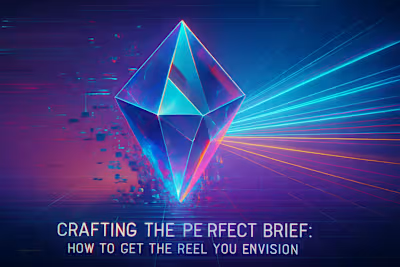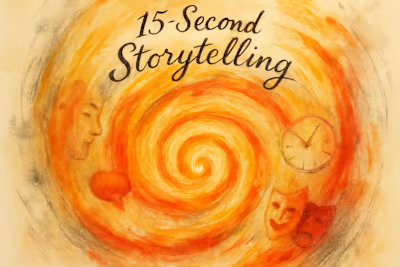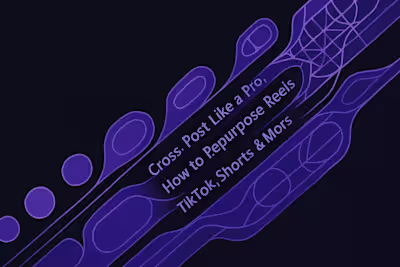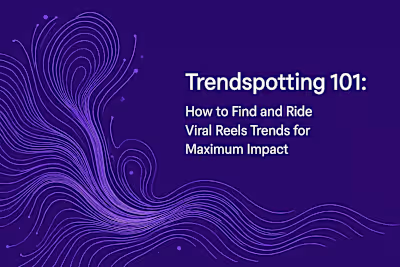Timeline Truths: What to Expect From First Cut to Final Reel
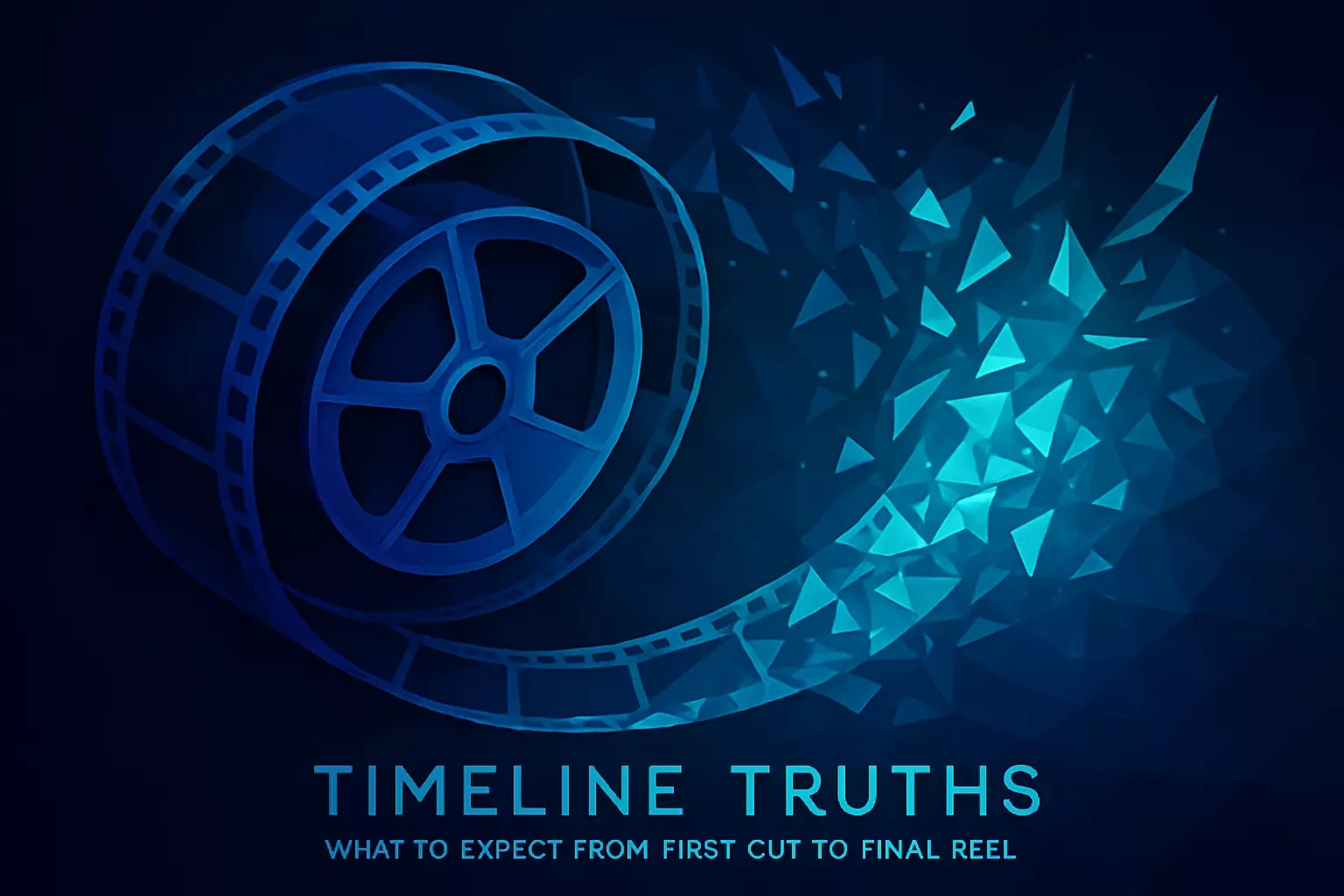
Timeline Truths: What to Expect From First Cut to Final Reel
The Three Core Phases of Video Production
Phase 1: Pre-Production (Planning)
Phase 2: Production (Filming)
Phase 3: Post-Production (Editing)
Factors That Influence Your Reel's Timeline
Complexity of the Concept
The Feedback and Revision Process
Asset Availability
A Sample Timeline for a Typical Instagram Reel
Pre-Production (1-3 Days)
Production (1 Day)
Post-Production (2-5 Days)
Total Estimated Time
References
Timeline Truths: What to Expect From First Cut to Final Reel
One of the most common questions when commissioning a video is, "How long will it take?" The answer depends on many factors, but understanding the typical production phases can help you set realistic expectations. From the initial brief to the final, polished Reel, each stage takes time. Knowing this workflow is essential for a smooth process and helps you appreciate why a healthy feedback loop is so important. A clear timeline also fosters a relationship of trust with your creator, which is vital for creative success. When you're ready to start, you can hire an expert Reels videographer to manage the process.
Think of video production like building a house. You wouldn't expect contractors to show up and start hammering without blueprints, right? The same principle applies to creating compelling video content. Each phase builds on the previous one, and rushing any step can compromise the final result.
The Three Core Phases of Video Production
A video project is generally broken down into three main stages: pre-production, production, and post-production. While a short Reel has a much faster turnaround than a long corporate video, it still follows these fundamental steps.
Understanding these phases helps you know what's happening behind the scenes. It also explains why your videographer might need a few days before showing you anything tangible. They're not procrastinating – they're laying the groundwork for success.
Phase 1: Pre-Production (Planning)
This is the strategic foundation of your project. It includes developing the creative concept, writing the brief, scriptwriting, and storyboarding. For a Reel, this could take anywhere from a few hours to a few days, depending on the complexity and clarity of the idea.
During pre-production, your videographer is essentially becoming a detective. They're researching your brand, understanding your audience, and figuring out how to tell your story in 15 to 60 seconds. This phase might involve mood boards, reference videos, and lots of questions about your goals.
Don't underestimate this planning phase. A well-thought-out concept can save hours in production and post-production. It's like having a GPS before a road trip – sure, you could figure it out as you go, but why make things harder?
Phase 2: Production (Filming)
This is the actual shooting of the video. The time required depends on the concept. A simple talking-head Reel might take an hour, while a multi-location video with actors could take a full day or more.
Production day is where the magic happens, but it's also where Murphy's Law loves to visit. Weather changes, equipment hiccups, or a key person running late can all affect the timeline. Professional videographers build buffer time into their schedules for these inevitable surprises.
The filming phase often feels the most "real" to clients because you can see tangible progress. However, what looks like a quick shoot often involves hours of setup, lighting adjustments, and multiple takes to get everything just right.
Phase 3: Post-Production (Editing)
This is where the footage is assembled, edited, and polished. It includes editing the clips, adding music and graphics, color grading, and sound mixing. For a Reel, this can range from a few hours to several days.
Post-production is where your video truly comes to life. Your editor is juggling multiple elements: cutting footage to the beat of the music, adding text overlays at just the right moments, and ensuring everything flows smoothly. It's detailed work that requires both technical skill and creative vision.
Many clients are surprised by how long editing takes. Remember, for every second of finished video, there might be minutes of raw footage to sort through. Your editor is crafting a story from these pieces, not just slapping clips together.
Factors That Influence Your Reel's Timeline
Not all Reels are created equal. Several variables can significantly speed up or slow down the production timeline.
Understanding these factors helps you make informed decisions about your project. Sometimes a simpler concept delivered quickly is better than a complex idea that takes weeks to execute.
Complexity of the Concept
A simple, one-shot trend video will be much faster to produce than a Reel that requires custom animation, multiple locations, or complex visual effects.
Let's break this down with real examples. A trending audio with you lip-syncing in your office? That could be filmed and edited in a single afternoon. But a Reel showcasing your product with custom graphics, multiple angles, and professional lighting? That's a multi-day project.
Complexity isn't always better. Some of the most viral Reels are beautifully simple. The key is matching the concept to your goals and timeline. Your videographer can help you find that sweet spot between ambition and practicality.
The Feedback and Revision Process
The number of revision rounds and the timeliness of your feedback are major factors. Prompt, clear, and consolidated feedback can keep the project moving, while delayed or vague notes can cause significant hold-ups. A project can take anywhere from two weeks to two months just in post-production.
Here's a scenario that happens all too often: The first cut is delivered on Monday. The client promises feedback by Tuesday but doesn't send notes until Friday. Then different team members send conflicting feedback over the weekend. Suddenly, a project scheduled for one week stretches into three.
To avoid this, designate one person to collect and consolidate all feedback. Set realistic deadlines for your internal review process. And remember, "I don't like it" isn't helpful feedback – be specific about what needs changing and why.
Asset Availability
If the videographer needs specific brand assets from you—like logos, fonts, or product shots—having them ready from the start will prevent delays. Delays in providing these materials can bring the editing process to a halt.
Think of assets like ingredients for a recipe. Your videographer can't start cooking if half the ingredients are missing. Before your project begins, create a shared folder with all necessary materials: high-resolution logos, brand guidelines, product images, and any specific fonts or graphics you want included.
Missing assets create a domino effect. Your editor might be ready to add your logo to the final frame, but if they're waiting for the right file format, the entire project stalls. Being organized upfront saves everyone time and frustration.
A Sample Timeline for a Typical Instagram Reel
While every project is unique, here's a rough estimate of what you might expect for a standard, professionally produced Reel.
These timelines assume smooth communication and no major revisions. Think of them as best-case scenarios that give you a baseline for planning.
Pre-Production (1-3 Days)
This includes the initial call, brief creation, concept finalization, and scheduling the shoot.
Day one might involve your discovery call and initial brainstorming. The videographer then spends time researching trends, developing concepts, and creating a shot list. By day three, you've approved the concept and scheduled the shoot.
During this phase, be available for questions. Quick responses to "Would this location work?" or "Can we use this trending audio?" keep momentum going. The more engaged you are in pre-production, the smoother everything else flows.
Production (1 Day)
This covers the filming itself, which can often be completed in a single day for a series of Reels.
A typical production day might start with setup at 9 AM, filming from 10 AM to 3 PM, and wrap-up by 4 PM. Smart videographers often batch-shoot multiple Reels in one session, maximizing efficiency.
On shoot day, arrive prepared. Know your talking points, have outfit changes ready, and charge your phone if you're filming on it. Small preparations make a big difference in keeping the day on schedule.
Post-Production (2-5 Days)
This includes editing the first cut, one to two rounds of revisions based on your feedback, and delivering the final files. The editing process for corporate videos can take 2-4 weeks.
Day one and two are typically spent on the rough cut. Your editor is selecting the best takes, syncing audio, and creating the basic structure. Days three and four involve refining based on your feedback, adding graphics, and perfecting transitions. The final day is for last touches and file delivery.
Remember, good editing takes time. Your editor isn't just cutting clips – they're crafting a narrative, ensuring visual consistency, and optimizing for platform specifications. Rushing this phase often leads to a product that feels unfinished.
Total Estimated Time
From start to finish, a typical Reel project can take approximately 1 to 2 weeks. However, it's important to remember this is an estimate and can change based on the factors mentioned above.
A week might seem long for a 30-second video, but consider everything involved. You're not just paying for 30 seconds of content – you're investing in strategy, creativity, technical expertise, and multiple rounds of refinement.
Some projects move faster, others take longer. A trending Reel capitalizing on a viral moment might need a 48-hour turnaround. A brand campaign with multiple stakeholders might take three weeks. The key is setting expectations early and communicating throughout the process.
Building in buffer time is always smart. If you need a Reel for a product launch on the 15th, don't start the project on the 10th. Give yourself breathing room for unexpected delays or additional revision rounds.
Working with video professionals becomes much easier when you understand their process. Each phase serves a purpose, and rushing any step can compromise your final product. By respecting the timeline and maintaining clear communication, you'll end up with Reels that truly represent your brand and engage your audience.
The next time someone asks "How long will my video take?" you'll have a realistic answer. More importantly, you'll understand why it takes that long and how you can help keep the project moving smoothly. Great video content is worth the wait – and now you know exactly what that wait entails.
References
Like this project
Posted Jun 30, 2025
How long does it take to create a Reel? Understand the typical video production timeline, from pre-production to final delivery, and set realistic expectations.






